#cat recognition skills activated
Explore tagged Tumblr posts
Note

Neil gaiman?
Easy mistake to make. Actually a cat.
11K notes
·
View notes
Text
Top 10 Animal Comparisons for Near
inspired by this iconic post by @13eyond13 :-)
10. Gecko
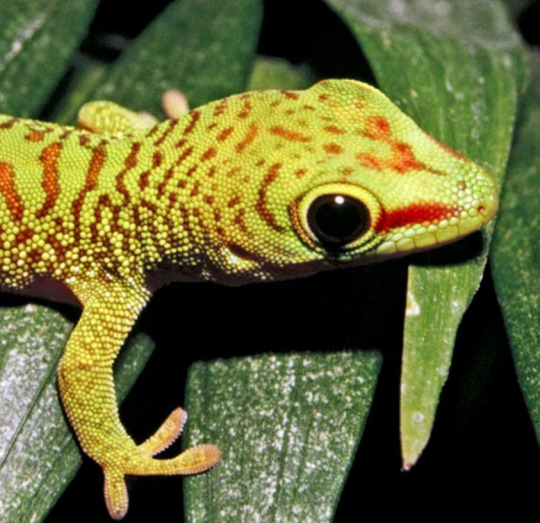

geckos made it onto the list because of their round black eyes and solitary nature. i also found it interesting that the oldest known gecko lived to 27, which is the same age we see Near in his last canon appearance.
9. Hedgehog


wary of people and not easily trusting. generally solitary, although capable of forming few attachments, and most content in familiar, comfortable environments. both show tendencies to curl in upon themselves.
8. Squirrel


curious and intelligent with impressive memories and problem-solving skills. also seen to be quite cunning and have a variety of tricks and schemes to deceive potential predators or food thieves. they would have been higher on the list if not for the fact that they are known to be very active and social.
7. Raccoon


not as strong a comparison for Near as they are for L, but they are known to be highly intelligent, cheeky and mischievous, much like Near. the comparisons are similar to those of squirrels, but ranked slightly higher due to their more solitary nature.
6. Rabbit
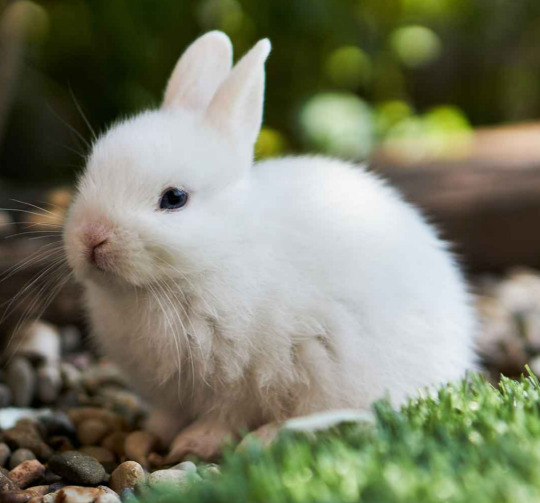
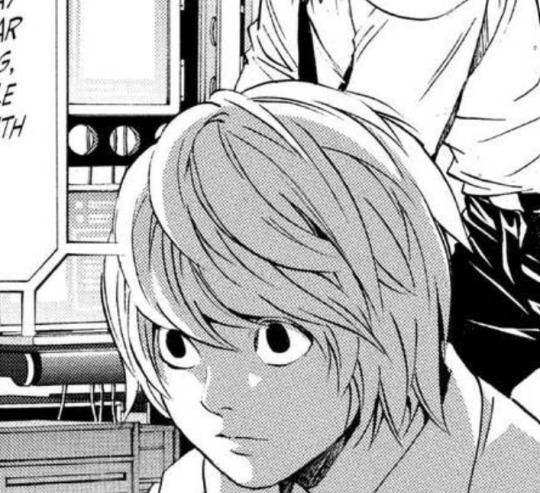
intelligent and inquisitive but can easily become bored. the appearance is the main feature that made me rank them so high, with reference to the round black eyes, small build and (for some breeds) white aesthetic. they also typically spend their entire lives in the same place and do not move far from their warren, which reflects Near's preference for staying indoors in one place where possible. rabbits probably could not catch a plane by themselves.
5. Seal


much like the gecko, seals came to mind because of their big black eyes and solitary lifestyles. they move in packs for safety but are not typically close with other individual seals, which mirrors Near's preference for working in a team despite having no close personal relationships outside of that. however, seals are much higher on the list because of their tendency to lounge around on rocks or play alone when they aren't hunting, which reminds me a lot of Near. they are also known to be intelligent and cautious.
4. Arctic Fox
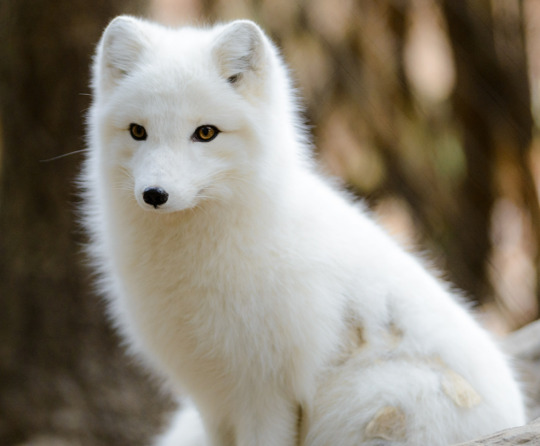

quite small and unassuming but sneaky, clever and adaptable. arctic foxes are not as strong or aggressive as other breeds but are very cunning, and sometimes follow larger animals like polar bears while hunting for protection and to find prey. in terms of aesthetic, the arctic fox specifically reminds me a lot of A-Kira Near with its white fur/dark eyes combo, long body and graceful aura. foxes are also commonly associated with the zodiac Virgo, which is Near's star sign.
3. Sheep
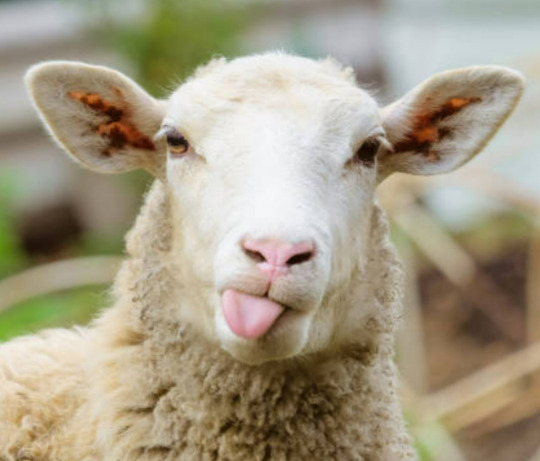
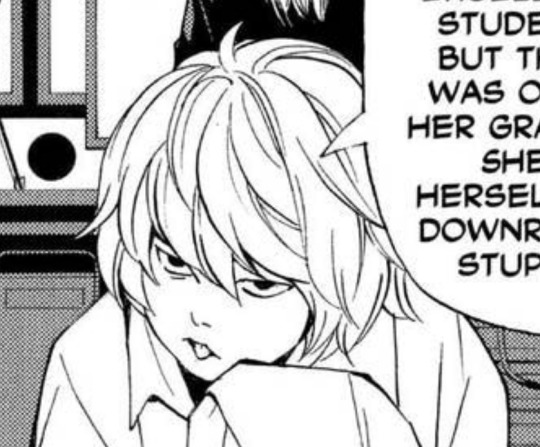
a very common comparison for Near based on appearance. both are calm and level-headed with a high level of intelligence, and very strong memory and recognition skills. despite being known for their placid nature, sheep can have a wide range of emotions, much like Near.
2. Cat


rolls around on the floor, plays with toys and is often destructive while playing. looks innocent but is actually a little bastard. my specific choice for him is a ragdoll cat because of their placid temperament, mostly white colour palette and preference for the indoors (and also because i am a ragdoll owner myself, so i am very biased <3)
1. Frog
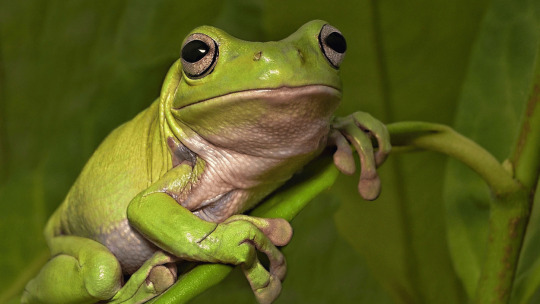

self-explanatory i suspect. he may not share the most personality traits with frogs, but their overall vibe is too similar to rank any lower than first.
bonus comparison, in case you aren't convinced:
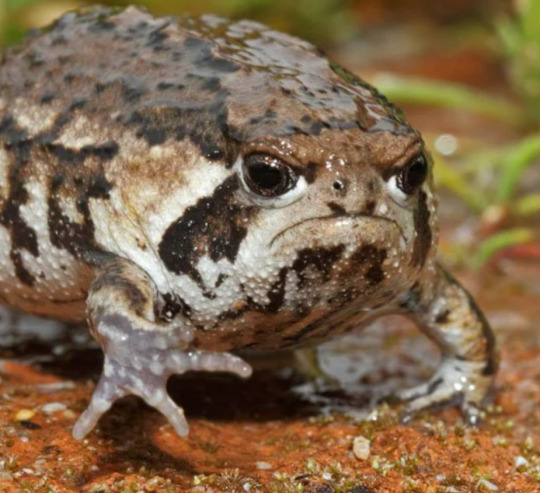

112 notes
·
View notes
Text







PLEASE READ TO HELP A DISABLED QUEER ARTIST IN A BAD SITUATION.
I've been posting my art online since 2004. Unfortunately, due to mental illness, stress, symptomatic skill decay, and chronic pain, my work has had slow progress and even slower recognition. I've never been able to break past more than a couple hundred followers except on platforms where one or two non-art posts gained traction.
I'm in my 30s, and I've lost multiple jobs due to my illnesses. I'm trying to find a long-term solution, but I can't even find a temp job. My back pain has gotten so bad I can barely move-- It's complicated, but I'm currently stuck in a very abusive living situation and have to hop between two households bi-weekly just to survive. I have bills to pay, a beautiful tuxedo cat to feed and care for, groceries, monthly expenses, my phone even got turned off this month.
Obviously, I'm grateful for those who have helped me. But every time I post about needing help, it either gets suppressed by the algorithm, or it gets plenty of notes, with no results. I've been barely half active on tumblr since the spice ban, I've moved from Deviantart, to here, to Twitter and Instagram, to Tiktok, and sometimes bluesky. Now, most of these platforms make it impossible to gain any traction as an artist.
So I'm asking, please, whatever you can do-- share, reblog, like, a dollar, every little bit helps. I need at least 500$ to try and cover my bills, and I already have a stack of commissions I need to finish. I'm putting all my links under this post. You can also follow me on all my platforms, linked in my bio card! Thank you for reading!
19 notes
·
View notes
Text
thank you anon for your request! we hope you like your match-up headcanons :3
If anyone else would like headcanons this is our kofi
ALEX <3

Sfw
1. How they met (again): A wave of nostalgia washed over you as you approached Evelyn’s door – summers spent helping Evelyn tend her garden, learning to bake perfect pies, and chasing fireflies with a freckled, grinning boy named Alex. When you rang the doorbell, a tall, handsome brunette opened the door. “Hi there, you’re new,” the man said flirtatiously, his gaze appreciative as he leaned against the doorframe, an easy grin on his face. "Actually, just moved back,” you replied. “I brought some stew for Evelyn. I used to spend summers here." A flicker of recognition crossed the stranger's face, then surprise. "Y/n?" He asked. You gaped, then a smile bloomed on your face. "Alex? Is that really you?" Alex grinned a bit sheepishly, "Yeah, yeah. Grew a bit since then, haven't I?" Evelyn bustled in before you could reply, the older woman’s face lighting up upon seeing her. "Y/n! You came back! Come in!" She ushered you to the kitchen and Alex followed. The afternoon flowed quickly, as the group caught each other up about their lives, with you discovering a new side to Alex – one that still held a hint of that mischievous boy you remembered. Evelyn turned to Alex, a playful glint in her eyes. "Remember that time you tried to impress Y/n with your..., artistic skills?" Alex's face turned the shade of a ripe tomato. "Gran!" he groaned, burying his head in his hands. You doubled over with laughter as memories flooded back – a lopsided driftwood mermaid with seaweed hair and a permanent surprised expression. Alex, then a freckled, gap-toothed ten-year-old, presenting his "masterpiece" with all the confidence in the world. As laughter filled the kitchen, you realized how much you missed these summers. You left with a smile on your lips and a promise to return soon.
2. After you began visiting Alex’s house regularly with the excuse of visiting Dusty, Alex would soon enough start dropping by your house on his morning runs, with the excuse of visiting your cat Henry. Over time you both would realise they didn’t need excuses to see each other ;).
3. Dates would involve a lot of physical activity so if you weren’t physically fit already you would be soon enough. He would ask you to play catch on warm sunny days and the days the you both hang out inside, he would integrate you into his workout routine and make you sit on his back for push ups.
4. Alex would regularly compliment your appearance. He loves telling his girl she looks stunning. “Are those new jeans? They are doing something right ;)”
2. After you started began visiting Alex’s house regularly with the excuse of visiting Dusty, Alex would soon enough start dropping by your house on his morning runs, with the excuse of visiting Henry. Over time you both would realize you didn’t need excuses to see each other <3
5. You hate fishing? This man has never held a fishing rod in his life. All he cares about are sports, his dog, his grandparents and you <3
6. You and him would go on cute dates and picnics around the Valley with Dusty. You would try out new recipes and bring packed lunches for the dates and Dusty would eat them all.
7. Alex would ask you to teach him how how to cook, especially when he insisted on surprising Evelyn with a home-baked cake on your birthday. He tries to put his protein mix in the cake batter. You gently steer his hands away and prepares a backup cake. Alex’s cake would turn out surprisingly good, thus discovering his talent for cooking (thanks to Evelyn’s genetics) and the back up cake would go to the rest of the townspeople.
8. Alex is really glad that you gets along with Evelyn, especially when it comes to them both cooking together. He loves watching you take part in domestic chores. Not in a sexist way, but it warms his heart watching you bond over something with Evelyn and be all feminine.
9. George on the other hand takes a long time to get used to your presence. He’ll often look like he’s scowling at you but he’s actually just judging and observing whether you are someone who will hurt him and his loved ones. When he sees you being bubbly and genuinely having fun with his family, George will wheel up to your conversations to simply listen. Alex notices this change in George over time and that’s how he knows he found the right girl <3
10. Alex is totally cool with you coming over to his room to just chill and listen to music or whatever while he works out. He’ll disturb you every now and then, “Babe, am I looking swole or what?” He gets used to parallel playing with you so often that he goes over to the farm to play with his football in your spacious land while you tend to the crops.
N/sfw
1. Alex at first wouldn’t let you dominate him. He has a silly backwards thinking that the man has to always be dominant and take control in bed. The first time you are able to dominate him is by tricking him. You would have to plead him to let you top for a few minutes just so you can feel his hard muscles and kiss them. With an easy stroke of his ego you are able to be on top. While he is busy playing with your boobs, you grab the handcuffs that you hid nearby and cuff him to the bed. From then on Alex lets you dominate him.
2. It’s very hard to get Alex to admit that he likes being edged. He loves the feeling of you kissing your way down his neck and chest all the way down to his cock. Watching and feeling your naked skin brush against his drives him nuts. And the way you tantalizingly kisse his dick without taking it in your mouth makes him want to thrust himself in there.
3. The height difference always makes Alex feel stronger around you. He enjoys picking your small frame up easily and pushing you back to the wall as you struggle to hold on to him. It doesn’t help that he kisses the most sensitive parts on your neck making your legs shake. Listening to your whimpers and moans from just that simple act makes Alex even harder, but he forces himself to take it slowly and not fuck you right then and then.
4. Alex loves watching the view as you ride him, watching your breasts bounce while his hands are tied to the headboard. He wishes he could fondle them, but he sticks to pumping fast from beneath.
5.While he is tied up you would pleasure him in different ways, starting with a handjob getting him close, then slowly sucking on his tip with your lips and then riding him. This gets him extremely sensitive, and he cums fast and hard.
6. Alex would roll his eyes back as he pumps you with your legs over his shoulders, you get a clear view of his eyes rolling back in ecstasy.
7. When Alex fucks you the bed shakes, his humping is fast and speedy as if to a beat. He
moans and grunts into your ear as well. You both would have to slow down in case George and Evelyn would hear you.
8. Alex would definitely be into fucking you in the kitchen after he innocently asks you to teach him how to cook. He would bend you over the counter and run his fingers through your hair.
9. Alex likes to carry you up bridal style after having sex outside the bedroom and lay you down gently on the bed, watching your form. He would bring you water and kiss your forehead with a smile, telling you how much he loves you.
10. Alex is big on cuddling, he’s always the big spoon and laying in this position with him is dangerous as it almost always gets him hard and turns it into a heated session.
your jocks,
admins sar, sav, & san
#writing commission#writing commissions#kofi#kofi support#commission#commissions#open commissions#stardew valley#sebastian x reader#sdv#sdv sebastian#stardew#stardew farmer#sdv bachelors#sdv farmer#alex sdv#sdv headcanons#stardew valley headcanons#sdv bacherlors#alex stardew valley#alex x reader#alex x farmer#stardew alex#sdv alex
70 notes
·
View notes
Text
thinking about our general societal disconnect from. being an animal. somehow being a biological being with physical needs and instincts and natural cravings is frowned upon and it baffles me.
when i was eight one of my teachers informed the class that even though we are related to other primates we aren’t really animals because God made us for a better purpose. while I do believe in God, I also believe in evolution, and I believe that we are made of the same concoction of chemicals and flesh and bone as our fellow creatures. and it shows.
cause…we have animal needs. we eat and drink, yes, but I also mean that we are pack creatures and the majority of us do best when living with others. and we are omnivores (who need a more plant-based diet than many people have access to these days) with front-facing eyes and endurance stamina and pattern recognition skills perfectly suited to foraging. and we are physiologically soothed by the color green and the sound of running water and by looking at plants.
we’re animals!!!! I’m a little flesh beast and so are you!!!!! modern jobs have us sitting still, indoors, working on tasks that all too often do not scratch the itch in our brains. you know when I have felt that itch get scratched? when I’ve stuck my hands in a cold stream and splashed around, when I’ve been crouched on the ground watching a line of ants, when I’ve helped a friend turn salvaged wood into a garden bench over the course of an afternoon, when I’ve filled a basket with blackberries, when I’ve hiked and chased seagulls and let the little animal who lives somewhere in the simplest most foundational parts of my brain do what it was made to do.
somehow those kinds of activities are seen as immature or childish or just weird. and it probably has to do with a whole slew of -isms (ableist ideas of worth based on productivity? racist views that portray lifestyles and cultures based on subsistence farming/nomadic practices/animist philosophy/etc as uncivilized? Protestant work ethic viewing physical needs as an obstacle to maximum efficacy?) but it’s something I rarely see talked about, even on tumblr where talking about theory is common.
i think we need to start talking about the weird shame that a lot of people and groups these days experience when it comes to being an animal and all that creature-ness entails.
also. for all that “touch grass” gets bandied about and rightfully criticized, please…if you’re able to go outside. please do it. biophilia is a real observable phenomenon and it is one hell of a drug. and it doesn’t require a national park! earlier today I entered a near-meditative state while observing bees just doing their thing! the world is full of wonders! (and if you can’t go outside, maybe watch a nature doc or start a window garden or do whatever you can to tend to the indoor cat in your brain!) we are all creatures and we! need! enrichment!
#biophilia#not sure what to tag this#we are creatures#creatureposting#I like the sound of that one I’m gonna start tagging my little animal adventures with it
28 notes
·
View notes
Text
15 Questions for 15 People
Tagged by @sammysdewysensitiveeyes -- thank you!
Are you named after anyone?
No, actually. I think my parents just liked the name.
2. When was the last time you cried?
The last time was over a sad news story, but I'm not certain what it was or how long ago. Might have been about the fire in Maui.
3. Do you have kids?
Just the four-legged kind (yeah, I'm one of those people).
4. What sports do you play/have you played?
I'm clumsy as hell and have never been good at anything involving co-ordinated activities, though I used to be an okay sprinter. My joints hate me now so all I can do is walk these days, and that's what I do nearly every day.
5. Do you use sarcasm?
It's just one of many services I offer.
6. What's the first thing you notice about people?
Anything notable except the eyes. Unfortunately when I'm really stressed in social interactions I tend to not notice much or anything at all, basically putting all my cognitive resources into not being rude or acting like a complete social idiot. When less stressed, I'll focus on anything visually distinctive about them + their voice to remember them in the future. My facial recognition skills aren't great, and it's so embarrassing when I run into a casual acquaintance and they know who I am but I don't recognize them at all. Or I recognize their voice when they speak, but look rude for not acknowledging them earlier.
7. What's your eye color?
Green, probably -- one eye is slightly more brown so I was wondering if they might be considered hazel, but I think they're overall more green than hazel.
8. Scary movies or happy endings?
Happy endings for sure, as I'm a huge wuss who can't take scary. Makes me anxious and rattled for a long time afterward.
9. Any talents?
Hopefully I've got decent writing skills. My best talents are probably a good memory and a stupid dogged persistence which have served well in my hobbies but are often a hindrance in everyday social interactions.
10. Where were you born?
Toronto, Ontario.
11. What are your hobbies?
Comics, obviously, and I'm hardcore into genealogy these days. I like writing fic when I've got the inspiration/motivation (that's been rare these past few years), and enjoy thrifting, tea, photography, and minerals.
12. Do you have any pets?
One cat, who is pure trouble. We found her last year while out for our daily walk, and she followed us more than a kilometre home despite a pronounced limp. Turns out she had an abscess on her hip, and once treated she regained her ability to jump and walk normally.
13. How tall are you?
5'9.5". That half-inch is important because I've got a curved spine and feel robbed of my full 5'10 :>
14. Favorite subject in school?
History or geography.
15. What is your dream job?
Always wanted to work in a museum as a curator or an archivist of the collection.
Tag 15 people (these are some folks I haven't seen tagged with this): @tricksterrune @hesmiledlikeaweatherman @longitudinalwaveme @purplecyborgnewt @kenais-posts @demonbirdsforever @octy-gone @jessequinnfirstofhername @ohhicas
As always, don't feel obliged to do this, and feel free to do it even if not tagged!
15 notes
·
View notes
Text
Whole Word Recognition: A Reading Technique

Teaching children to read involves many approaches, and one effective strategy is Whole Word Recognition. This method focuses on helping children recognize entire words, especially high-frequency sight words, by sight. This article explains what the Whole Word Recognition technique is, how it works, and practical ways to implement it at home or in the classroom.
What Is Whole Word Recognition?
Whole Word Recognition is a technique that teaches children to instantly recognize entire words without decoding them letter by letter. This approach is particularly effective for high-frequency sight words that appear often in texts but may not follow standard phonics rules (e.g., "the," "and," "is").
By building a bank of words children can recognize on sight, this method helps improve reading fluency and confidence.
How Whole Word Recognition Works
1. Introduction of High-Frequency Sight Words
Begin with commonly used words like "the," "and," "is," "said," and "you."
Gradually introduce more complex sight words as the child progresses.
Focus on words that frequently appear in beginner texts and everyday contexts.
2. Repetition Through Various Tools
Use flashcards with the word printed clearly, along with illustrations if possible. Preschool High Frequency Word Flash cards Ready to Use available.
Create a word wall in the classroom or at home, displaying sight words in large, colorful letters.
Play interactive games like memory matching, bingo, or "word hunt" to reinforce learning.

3. Incorporating Visual Cues and Illustrations
Pair words with pictures to help children connect meaning to the word.
Use books with large print and illustrations where sight words are emphasized.
Include colorful posters or charts that combine sight words and images.
What You Can Do...
1. At Home
Label everyday objects around the house (e.g., "door," "chair," "table").
Practice reading sight words during storytime by pointing them out in books.
Use magnetic letters or sticky notes to create sight word displays on the fridge or walls.
2. In the Classroom
Dedicate a section of the classroom to a "word wall" that grows as students learn new words. Preschool High Frequency Sight Word Flash Cards Ready to Use, available now.
Start each day with a sight word review using flashcards or a group activity.
Incorporate sight words into songs, poems, and rhymes to make learning fun.
3. While Out and About
Point out sight words on signs, menus, and advertisements while shopping or traveling.
Encourage children to read short instructions or labels (e.g., "push," "stop," "open").
Create scavenger hunts where children look for specific sight words in their environment.
Benefits of Whole Word Recognition
Improves Fluency: Children learn to read common words quickly, making reading smoother and more enjoyable.
Builds Confidence: Recognizing words instantly reduces frustration and boosts self-esteem.
Enhances Comprehension: With fewer decoding efforts, children focus more on understanding the text.
Supports Early Writing Skills: Familiarity with sight words helps children spell and write these words correctly.
Suggested Tools
Sight Word Flashcards
Use colorful cards with a word on one side and an illustration on the other (e.g., "cat" paired with a picture of a cat).

Word Walls
Create a vibrant display of sight words in a prominent place. Use large fonts and bright colors.
Interactive Games
Design board games or digital games that involve identifying or matching sight words.
Themed Worksheets
Provide worksheets where children trace, color, and match sight words.
Sight Word Storybooks
Introduce books written specifically with high-frequency sight words for early readers.
Tips for Parents and Teachers
Be Patient: Some children may need more time and practice to remember sight words.
Celebrate Progress: Encourage and praise children as they master new words.
Mix and Match Techniques: Combine Whole Word Recognition with phonics to create a balanced reading approach.
Use Technology: Leverage educational apps and online resources that focus on sight word recognition.

Conclusion
Whole Word Recognition is an effective and enjoyable way to help children develop reading fluency and confidence. By focusing on high-frequency sight words and using tools like flashcards, word walls, and interactive games, parents and teachers can make the learning process engaging and successful. Combined with patience and encouragement, this technique ensures a strong foundation for lifelong reading and learning.
You might be interested to read other articles included in the Reading Skills series:
📚Unlocking Reading Success: The Power of CVC Words📖
The Phonics Approach to Teaching Reading
#learningnewwords#funforkids#under#teddy bear#bedtime stories#poems#adventure#HomeschoolingFun#ReadingForKids#HomeschoolActivities#LearnAtHome#PreschoolEducation#ReadingAdventure#InteractiveLearning#HomeEducation#Educational videos#reading and writing resources for primary school#short stories#Homeschooling#TeachersResources
2 notes
·
View notes
Text
Paint-by-numbers expedition
Painting by numbers for children is a fun and educational pastime that introduces them to the world of art. Children can fill in each form with the corresponding color by following the numbers on pre-printed canvases with numbered sections. This creative process aids in the development of their fine motor abilities, hand-eye coordination, and color awareness. As students watch their artwork come to life, it also develops patience, focus, and a sense of success. Kids Paint by Numbers is a fun and regulated way for youngsters to express their creativity while learning about the joys of painting.

Sunflower paint by number kits provide an exciting artistic experience centered on one of nature's most cheery and vivid blooms. These kits include a pre-printed canvas with numbered portions corresponding to different colors. Children may see their sunflower creation come to life as they follow the numbers and fill in the shapes with the appropriate paints, A sunflower paint by number activity promotes creativity, color recognition, and the development of fine motor abilities. The finished product is a gorgeous sunflower painting that captures the beauty and charm of these iconic blooms, providing youngsters with a sense of accomplishment as well as a lasting work of art to admire.
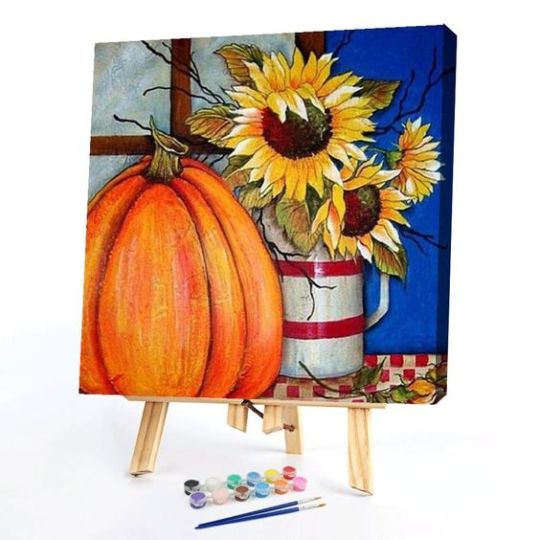
Paint by number cat kits is an enjoyable and interesting method to make gorgeous feline artworks. Artists of all ability levels can effortlessly construct magnificent cat images using a pre-printed canvas separated into numbered portions and associated colors. These kits offer a controlled and rewarding painting experience, allowing people to express their creativity while producing colorful and realistic artwork. Paint by Numbers cat kits are an easy and pleasurable artistic activity, whether you are a cat lover or simply searching for a calming hobby.
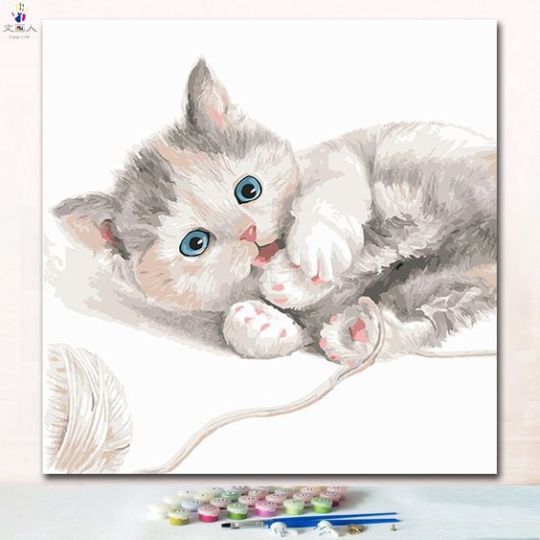
Horse paint-by-number kits have raced into the hearts of art lovers, providing a distinctive and enthralling way to create gorgeous horse works of art. These kits give people of all ages and painting abilities a guided and pleasurable painting experience with a pre-printed canvas separated into numbered portions and associated pigments. Horse paint by numbers enables anyone, experienced or novice, to express their artistic side and bring the majesty of horses to life on canvas.

Finally, there are several paint-by-number kits available online or in arts and crafts stores, and they come in varying degrees of intricacy to accommodate different skill levels. They are fantastic for experienced painters looking for a calm and organized art activity as well as beginners who wish to learn about painting.
2 notes
·
View notes
Video
youtube
Learn CVC Words in 5 Minutes With This Fun Beach Game!
Dive into learning with this fun and interactive CVC Words Beach Game for kids! 🏖️🐚 In this video, children will practice reading and sounding out consonant-vowel-consonant (CVC) words like "cat," "sun," and "hat" while playing a beach-themed game that makes early literacy exciting and engaging 🌞📚. Perfect for preschoolers, kindergarteners, and early readers, this educational activity helps build phonics skills, word recognition, and reading confidence—all while having a blast in a sunny, beachy setting! 🏄♂️🌊 Each word is introduced with colorful visuals and fun beach items to keep kids focused and entertained as they learn to read one word at a time!
LearningCVCWords, CVCWordGame, BeachPhonicsGame, LearnToRead, EarlyReadingSkills, PhonicsFun, CVCWordsForKids, PreschoolReading, KindergartenLiteracy, EducationalBeachGame, ReadingGameForKids, PhonicsPractice, SoundingOutWords, ConsonantVowelConsonant, FunReadingActivity, InteractiveLearning, CVCPracticeGame, BeginningReadingSkills, LiteracyGamesForKids, LearnWithPhonics, ReadingMadeFun, EarlyLiteracyDevelopment, ReadAndPlay, SightWordsForKids, WordRecognitionGame, PhonicsLearning, PreschoolEducation, SummerLearningActivity, CVCWordsBeachTheme, BeachLearningGame, KidsReadingAdventure
0 notes
Note
Cat?

Yes, that is a cat.
5K notes
·
View notes
Text
How to Create an Effective Phonics Lesson Plan for Beginners
Phonics is the foundational element of early literacy instruction, helping young learners connect the sounds of letters together into words that create writing and reading foundations. For effective phonics instruction, lessons need to be structured well while still engaging and targeted at children.
This blog explores ways to develop an efficient phonics lesson plan suitable for novice learners and offers recommendations for improving teaching abilities - Delighted Champs Phonics Teacher Training is one such course.

1. Establish Clear Learning Objectives:
A successful phonics lesson begins with setting clear learning objectives. These should describe what students should know by the end of each lesson - for students just starting out, these could include things such as:
Recognizing individual letter sounds (phonemes) can help individuals recognize specific letter sounds (phonemes).
Understanding the relationship between sounds and letters (graphemes) is crucial.
Mixing sounds to form words simple enough for speech recognition are simple techniques for producing simple language.
Reducing words into individual sounds.
Be specific in your goals. Instead of setting an ambitious yet vague objective such as "teach letter sounds," try making your goals even more concrete - perhaps, "Students will be able to identify and produce the sound associated with letter'm' when given a picture of a mouse."
2. Introduce the Basics:
by Starting With Sounds and Letters For those just entering phonics, begin by using simple high-frequency sounds, emphasizing those preceding names of letters since this field specializes in hearing rather than looking.
Tips for Teaching Sounds: To introduce sounds, utilize flashcards that include images representing them (e.g. "s" stands for snake).
Introduce letters on cards and emphasize their sounds.
Train students to say the words out loud so as to strengthen muscle memory.
Color codes may help students who learn visually connect the sounds to letters.
3. Include Interactive and Engaging Activities:
Phonics lessons must be engaging for students, so here are a few activities designed to keep their attention:
Sound Sorting: Provide students with various images or objects (bats or balls, cats etc) then ask them to sort them based on their initial sounds. This activity helps connect letters with sounds.
Hoopscotch Sound Make an e-board featuring hopscotched sounds and letters and let students hop to their respective letter sounds while you spell out words.
Song of Phonics Leverage rhymes or songs to reinforce letter sounds and increase auditory learning ability. Songs provide learners with an additional tool for auditory stimulation.
Kinesthetic learners can utilize letter tracing activities as a means to link physical and visual learning processes with sounds.
4. Concentrate on Blending and Segmenting:
segmenting and blending are vital skills necessary for writing and reading. To gain proficiency at either activity, beginners should practice mixing words (blending) while breaking them apart (segmenting).
Start with basic three-letter words like "cat" or "dog," then have students blend their sounds: /c/-a/t"cat "cat."
Segmenting Training Engage in practice saying out loud the word, then have students break it apart into its individual sounds: for instance "bat" = /b/-/a/-/t
Be sure to provide them with ample practice in these skills by providing simple words which correspond with what they have been learning so far.
5. Add Reading and Writing Activities:
Once your students are comfortable navigating sounds and mixing, incorporate writing and reading activities as part of their learning experience.
Reading words Students are provided a list of basic words they could read using their phonics skills, for instance "cat," "dog," and "bat."
Making Words Concrete Help your students write down the words they have read to gain an understanding of letters, sounds and written languages. This will enable them to grasp how each affects one another.
Introduce sight words (high-frequency words that don't comply with traditional phonics rules) as part of an introduction to more complex patterns of writing and reading.
6. Review and Reinforce: Always end a lesson with a review session to reinforce what students have learned by playing an easy game, song or activity to help reinforce it further and build up confidence among the pupils. This can help strengthen knowledge retention as well as foster greater student independence.
Play a phonics game where students have to identify letters or sounds correctly or test their knowledge by playing flashcards - repetition is key for mastery of this topic!
7. Include Assessment for Understanding:
For effective learning outcomes, be sure to include an informal evaluation process as part of the course curriculum. This could involve:
Reading one to one of words that are phonics,
Tasks in Sound Production,
Simple written exercises,
By testing students, it will become clear which sounds they struggle with and then adapting their lessons accordingly.
Why choose Delighted Champs for Phonics Teacher Training? Crafting an effective phonics lesson plan doesn't just involve creating structure - it requires connecting with each student individually and adapting to their learning needs - which makes the Delighted Champs Phonics teacher training such a valuable asset for educators.
Here is what makes Delighted Champs unique:
Delighted Champs provides a comprehensive training programme designed to equip educators with all of the knowledge and tools they need to master teaching phonics, from letter sound relationships and advanced strategies that help students mix and separate words to the various approaches available for mixing/splitting words.
Interactive and practical sessions Educators gain hands-on experience using effective phonics teaching strategies and techniques, which helps them apply what they've learned directly in the classroom setting.
Professional Instructors Learn from experts with years of teaching experience in reading and phonics. They'll give advice on creating engaging lessons as well as managing any issues during classes.
Delighted Champs provides continuous support through online resources, forums and refresher courses that keep teachers current with best methods in phonics education.
Flexible Training Solutions Delighted Champs provides flexible options that fit into your timetable and learning preferences for in-person or online classes, both of which may help meet your learning goals.
Conclusion,
To successfully create a Phonics lesson plan for children, set clear goals, include engaging activities and provide ample practice time. By employing various stimulating teaching methods and assessing student progress regularly, your phonics lessons are both efficient and enjoyable for everyone involved.
Delighted Champs Phonics Teacher Training offers teachers who want to hone their phonics teaching abilities the tools, resources and support necessary for success. From beginners looking to begin to seasoned educators looking to hone their techniques further, Delighted Champs can equip your students with confidence as readers and writers.
Start today and improve the teaching of phonics with Delighted Champs!
#onlinephonicsteachertraining#phonicsteachertrainingonline#phonicsteachertraininginuae#phonicsteachertraininginuk#phonicsteachertrainingnearme
0 notes
Text
Why IIM Calcutta is the Best Choice for Management Aspirants
Choosing the right business school is crucial for a successful management career. If you aim for a top-ranked institute with excellent faculty, strong placements, and global exposure, IIM Calcutta is the perfect choice. It is one of the most prestigious management institutes in India, known for its academic excellence, world-class infrastructure, and outstanding career opportunities.

In this article, we will explore why IIM Calcutta is the best institute for management students and how it can shape your future.
Prestigious Reputation and Global Recognition
IIM Calcutta is India’s first Indian Institute of Management, established in 1961. It is ranked among the top business schools in the country and has gained global recognition for its top-notch education and research. If you are looking for an institute that provides credibility and high value to your resume, IIM Calcutta should be your top priority.
Highly Experienced Faculty and Advanced Curriculum
One of the biggest strengths of IIM Calcutta is its faculty. The institute has some of the best professors, researchers, and industry experts who guide students with real-world case studies and practical learning. The curriculum is designed to develop strong analytical, strategic, and leadership skills, ensuring that students are industry-ready.
Top-Notch Placement Opportunities
Every year, IIM Calcutta achieves excellent placement records. Leading global companies visit the campus, offering high salary packages. Some of the top recruiters include McKinsey & Company, BCG, Amazon, Google, and Tata Group. If you dream of securing a high-paying job at a top company, IIM Calcutta gives you that opportunity.
Modern Campus and World-Class Facilities
The campus of IIM Calcutta is known for its beautiful infrastructure, advanced classrooms, and high-tech learning facilities. The institute has one of the largest management libraries in Asia, high-speed internet access, and well-equipped hostels. The environment is designed to support both academic learning and extracurricular growth.
Strong Alumni Network and Industry Connections
A major advantage of studying at IIM Calcutta is its powerful alumni network. Many successful business leaders, CEOs, and entrepreneurs have graduated from this institute. This alumni network helps students with mentorship, networking, and job opportunities. The connections made here can play a key role in shaping a successful career.
International Exchange Programs and Global Exposure
IIM Calcutta offers international exchange programs that allow students to study at prestigious universities abroad. These programs provide exposure to different business cultures, global case studies, and networking opportunities with international students.
Entrepreneurial Support and Startup Culture
If you have a dream of starting your own business, IIM Calcutta provides the perfect platform. The institute has incubation centers and entrepreneurship programs that help students turn their ideas into successful startups. Many successful entrepreneurs have started their journey from IIM Calcutta.
Vibrant Student Life and Extracurricular Activities
Life at IIM Calcutta is not just about studies. The institute offers various student clubs, cultural festivals, sports events, and leadership programs. These activities help students develop teamwork, communication, and leadership skills, making them well-rounded professionals.
Admission Process and Eligibility
To get admission to IIM Calcutta, students must clear the CAT (Common Admission Test) with a high percentile. The selection process also includes group discussions and personal interviews. Candidates with strong academic records and work experience have an added advantage.
Why IIM Calcutta is the Best for Your Future
If you want a successful career in management, IIM Calcutta provides the perfect foundation. The combination of top-quality education, excellent placement opportunities, and global exposure makes it one of the best institutes in the country.
Conclusion
In summary, IIM Calcutta is the ultimate destination for students who want to build a strong career in business and management. With its experienced faculty, outstanding placements, global exposure, and vibrant student life, it offers everything you need for a bright future.
If you need further information contact:
523, 5th Floor, Wave Silver Tower, Sec-18 Noida, UP-201301
+91 9711016766
0 notes
Text
University of Petroleum and Energy Studies (UPES) A Leading Institution for Higher Education
Embark on a dynamic academic journey at University of Petroleum and Energy Studies - a leading institution shaping future leaders in the energy sector. Join us today!

The University of Petroleum and Energy Studies (UPES) is one of India's premier universities, known for its specialized programs in energy, petroleum, engineering, business, and law. Situated in the picturesque city of Dehradun, UPES has emerged as a leading institution offering industry-aligned courses that equip students with the skills and knowledge needed for a successful career. This blog will delve into various aspects of UPES, including its history, programs, rankings, campus life, and admission process.
About UPES
Founded in 2003, the University of Petroleum and Energy Studies was established with a vision to provide world-class education in sectors like oil and gas, power, infrastructure, transportation, and law. Over the years, it has diversified its academic portfolio, offering a wide range of undergraduate, postgraduate, and doctoral programs in multiple disciplines.
Academic Programs at UPES
UPES offers an extensive range of programs across various schools, including:
1. School of Engineering
B.Tech in Computer Science Engineering
B.Tech in Mechanical Engineering
B.Tech in Petroleum Engineering
M.Tech in Structural Engineering
2. School of Business
BBA in Aviation Management
MBA in Oil & Gas Management
MBA in Digital Business
3. School of Law
BA LLB (Hons.)
BBA LLB (Hons.)
LLM in Energy Law
4. School of Design
B.Des in Product Design
M.Des in User Experience Design
5. School of Health Sciences and Technology
B.Sc. in Food, Nutrition & Dietetics
M.Sc. in Clinical Research
University of Petroleum and Energy Studies Ranking
One of the most significant factors that make UPES a preferred choice for students is its impressive ranking.
The University Of Petroleum And Energy Studies Ranking has consistently been ranked among the top institutions in India:
NIRF Ranking: UPES has been ranked among the top 100 universities in India by the National Institutional Ranking Framework (NIRF).
QS World Rankings: It has secured a position in the QS Asia University Rankings, showcasing its global academic standards.
Industry Recognition: Various industries and corporate bodies recognize UPES as a leading institution for producing skilled professionals in energy and allied sectors.
Campus and Infrastructure
Located in the lush green valley of Dehradun, the UPES campus provides a serene and stimulating environment for students. The university is equipped with modern infrastructure, including:
Smart Classrooms: Equipped with digital learning tools for an interactive learning experience.
State-of-the-Art Laboratories: Designed to provide hands-on experience in engineering, science, and technology.
Library & Research Centers: The university boasts a well-stocked library with access to thousands of books, journals, and research papers.
Hostel & Accommodation: The university offers comfortable hostel facilities with all essential amenities.
Sports & Recreation: UPES encourages holistic development through various sports activities and clubs.
Admission Process at UPES
UPES offers admissions through various entrance exams, including:
UPES Engineering Aptitude Test (UPESEAT) for B.Tech programs.
Law Aptitude Test (ULSAT) for Law courses.
Management Entrance Test (UPESMET) for MBA programs.
Candidates can also apply through national-level exams like JEE, CAT, MAT, XAT, CLAT, and LSAT.
Why Choose UPES?
Industry-Focused Curriculum: The university collaborates with top industry players to design its curriculum, ensuring students gain practical exposure.
Global Exposure: UPES has partnerships with leading international universities, providing exchange programs and global learning opportunities.
Placement Opportunities: The university has an excellent placement record, with top companies like Schlumberger, ONGC, Deloitte, Infosys, and TCS recruiting students.
Research & Innovation: UPES encourages students to engage in research, innovation, and entrepreneurship.
Conclusion
The University of Petroleum and Energy Studies (UPES) Dehradun is a top-tier institution that provides industry-aligned education in multiple disciplines. With its strong academic framework, excellent rankings, and modern infrastructure, UPES continues to be a preferred choice for students seeking quality education and promising career prospects.
To learn more about UPES and online education opportunities, visit: https://www.onlineuniversitiess.com/
0 notes
Text
Dot Number Printables: Fun and Educational Activities for Kids
Dot number printables are a great way to help young children learn how to recognize numbers, practice counting, and improve fine motor skills. These printables typically feature numbered dots or images that children connect, color, or trace. They’re an excellent resource for early learners, especially in preschool and kindergarten, as they develop their number sense and counting abilities. Let’s dive into why dot number printables are beneficial and what kinds of activities they include.
What Are Dot Number Printables?
Do a dot number printables are worksheets that include a series of numbered dots that children can connect to form a picture or shape. These printables typically focus on:

Number Recognition: Children learn to recognize numbers as they connect or color the dots based on the numbers provided.
Counting Practice: Children practice counting in sequential order as they move from dot to dot, connecting them to reveal a hidden image.
Fine Motor Skills: Activities such as tracing, dot-to-dot, or coloring help children improve their hand-eye coordination and fine motor skills.
Following Instructions: Dot number printables encourage children to follow directions, such as connecting the dots in numerical order, which helps them develop listening and attention skills.
Why Are Dot Number Printables Important?
Dot number printables offer numerous benefits for young children:
Engaging Learning: The combination of numbers, pictures, and coloring keeps children engaged in the learning process while having fun.
Building Confidence: As children successfully connect the dots and form pictures, they gain confidence in their ability to recognize numbers and complete tasks.
Visual and Hands-On Learning: Dot number printables provide both visual and hands-on learning, which is especially effective for young learners who need interactive ways to engage with numbers.
Supporting Early Math Skills: They lay a strong foundation for early math skills, including number sense, one-to-one correspondence, and basic counting.
Types of Dot Number Printables Activities
There are various types of dot number printables that target different learning outcomes. Some common activities include:
Dot-to-Dot: These printables feature a series of numbered dots that children must connect in order. The connected dots form a picture, such as an animal, object, or character. For example, children may connect numbers 1 to 20 to reveal a picture of a cat.
Number Tracing: These worksheets include dotted lines forming numbers that children can trace to improve their number writing skills. This activity helps develop fine motor skills and handwriting.
Dot Coloring by Number: Similar to color-by-number activities, children color in different sections of an image according to the numbers assigned. For example, a picture might include sections labeled “1” (red), “2” (blue), and “3” (yellow), and children color the dots accordingly.
Counting Practice: Some dot number printables ask children to count the number of dots and write the correct number next to the image. This helps reinforce number recognition and counting.
Shape Recognition: Children may connect dots to form shapes, such as squares, triangles, and circles, which helps them recognize geometric shapes while reinforcing number skills.
Where to Find Dot Number Printables
Dot number printables can be found easily online on various educational platforms. Many websites offer free printable worksheets for parents and teachers. Some popular resources include:
Education.com: This website offers a wide selection of free and premium printable worksheets, including dot number printables for young learners.
Teachers Pay Teachers: A marketplace where teachers share resources, including dot-to-dot worksheets and other number-based printables.
Super Teacher Worksheets: A site with many free and paid worksheets, including dot number printables, to help children practice their counting and number skills.
Printable Coloring Pages Websites: Many sites provide dot-to-dot printables as part of a broader selection of educational coloring pages.
Simply search for “dot number printables PDF” or “dot-to-dot worksheets” to access downloadable materials. Many worksheets are available in PDF format for easy printing.
Conclusion
Dot number printables are a fun and effective tool to help children practice counting, number recognition, and fine motor skills. Whether through dot-to-dot activities, number tracing, or color-by-number exercises, these printables offer an interactive and hands-on approach to early math learning. With engaging activities that combine numbers and art, children can build their confidence and foundational skills while having fun. If you're a teacher or parent, incorporating dot number printables into your child’s routine will help them develop key early math abilities in an enjoyable way.
1 note
·
View note
Text
Annotating the Future: How Image Annotation Services Drive AI Success
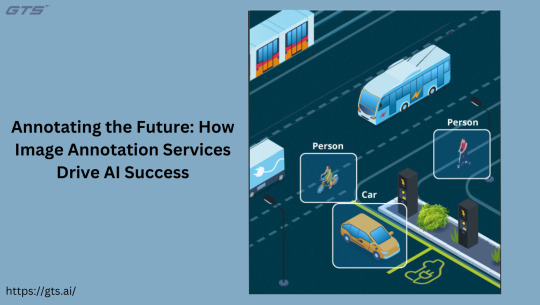
In this fast-paced AI world, the success of any machine-learning system mainly depends on the quality of the data fed into it for exercise. In this journey, image annotation services have emerged to become an essential enabler, transforming raw visual data into structured, labeled datasets. These annotations are the backbone of AI innovations that power facial recognition, autonomous vehicles, e-commerce, healthcare, and beyond.
This blog will discuss how image annotation services are making waves in transforming the landscape for AI by enabling smarter, more accurate models.
What is Image Annotation?
Image annotation is the process of tagging images with labels or metadata to help AI models 'understand' and interpret visual data. Annotated images guide algorithms in identifying objects, classifying images, and predicting with structured data.
Annotated images are crucial because raw data left to itself is unstructured and useless, whereas clarity given to images helps ML systems to perform with much higher accuracy on tasks like object detection, image segmentation, and activity recognition.
Why Image Annotation is Critical for AI Success
Better Training Data, Smarter AI Models: AI systems are, simply put, only as smart as the data they are trained on; annotated images clear the way for the models, setting a foundation on which the models will learn patterns and carry on and make predictions.
Confronting Real-World Complexity: A real-world environment is dynamic and complex. This is where high-quality image annotation ensures that models can work through these complexities, like objects overlapping, changing lighting conditions, or different angles.
Fueling Automation: From retail to robotics, annotated data fuels automation by enabling machines to do mundane tasks like inventory counting, autonomous navigation, and quality checks on assembly lines.
Custom AI Applications: Every industry has its own specific needs; annotation services enable the creation of customized datasets tailored to certain applications.
Core Image Annotation Types
Different types of annotation for various AI applications. Let’s delve deeper into some common techniques thereof:
Object Detection: Tags objects in an image with bounding boxes. Example: Identifying cars, pedestrians, and traffic signs for autonomous vehicles.
Semantic Segmentation: Assigns each pixel in the image to a particular class, thus creating highly-detailed annotations. Example: Classifying road, sidewalk, and vegetation for urban planning.
Keypoint Annotation: Marks certain specified points on the object or human like facial landmarks or joint positions. Example: Tracking facial expressions for emotion detection.
Image Classification: Labeling an entire image based on its primary content. Example: Classifying images of cats, dogs, and birds for a pet identification application.
Polygon Annotation: Outline differently shaped objects to yield accurate labeling results. Example: Defining the boundaries of buildings in satellite imagery.
3D Cuboid Annotation: A 3D view of objects added for applications that require describing depth and dimension. Example: Annotating furniture for Augmented Reality (AR) home design tools.
Applications of Image Annotation Services
The scope of image annotation spans a wide range of industries, each leveraging this technology for innovation and efficiency.
Autonomous Vehicles
Healthcare
Retail and E-Commerce
Agriculture
Security and Surveillance
Entertainment and Media
GTS: Elevating Image Annotation Services
Globose Technology Solutions (GTS) stands out as a leader in providing high-quality image annotation services designed to meet the demands of contemporary AI systems.
Precision and Expertise: GTS utilizes skilled annotators equipped with advanced tools to ensure accurate and consistent outcomes.
Scalable Solutions: Whether you're developing a small AI model or a large-scale enterprise system, GTS delivers scalable annotation services tailored to your requirements.
Data Security: GTS is committed to ethical and secure data handling, strictly following privacy standards.
Multidomain Support: From healthcare to retail, GTS offers annotation solutions across a variety of industries, guaranteeing customized results.
Cutting-Edge Technology: By leveraging AI-assisted tools, GTS accelerates the annotation process while maintaining high quality.
The Future of Image Annotation
The image annotation field is on the brink of exciting developments, with trends set to transform how data is labeled and utilized:
AI-Assisted Annotation: Tools that merge human expertise with AI automation will enhance both efficiency and accuracy.
Synthetic Data Generation: Simulated environments will produce annotated data for situations where obtaining real-world data is challenging.
Edge Annotation: Real-time annotation for edge devices will facilitate applications such as drone surveillance and augmented reality experiences.
Ethical AI: Emphasizing the reduction of bias and the promotion of diversity in annotated datasets will contribute to the creation of more inclusive AI models.
Conclusion
Image annotation is rightfully considered the cornerstone of understanding and processing visual data by an AI model. Accessible through structured datasets, it chimes innovation across various industries to design the future.
Globose Technology Solutions (GTS) is at the head of this evolution, providing accurate, scalable, and secure image annotation services that promise the success of AI. GTS, being committed to quality and innovation, ensures that your AI projects are built upon a strong and sturdy foundation.
The future of AI starts with the right data, and the right data starts with some experienced annotation. Let GTS help you out on that path to success!
0 notes
Text
📚Unlocking Reading Success: The Power of CVC Words📖

Unlocking Reading Success: The Power of CVC Words
Learning to read is an exciting and transformative journey for young children. At the heart of this process lies a small yet powerful tool: CVC words. These simple, three-letter words play a critical role in developing early reading skills and building a strong foundation for lifelong literacy. In this guide, we’ll dive into what CVC words are, why they are essential, and effective teaching strategies parents and teachers can use to teach them in fun and engaging ways.
What Are CVC Words?
CVC stands for Consonant-Vowel-Consonant. These words follow a straightforward pattern: a consonant sound, followed by a vowel sound, and ending with another consonant sound. This structure makes them perfect for beginner and preschool readers and primary grades.
Here are some examples of CVC words:
cat
dog
bed
run
sit
Why Are CVC Words Important?
CVC words are an essential step in a child’s reading journey. Here’s why:
Building Blocks of Reading: They act as the foundational building blocks for more complex words and sentences.
Phonics Mastery: They reinforce the connection between letters and their sounds, a key concept in phonics instruction.
Decoding Skills: The simple structure helps children decode and sound out words, building confidence and encouraging a love for reading.
Early Reading Fluency: Mastering CVC words helps children recognize words automatically, a critical milestone for fluent reading.
Word Families: Learning CVC words introduces children to word families, like “-at” (cat, bat, mat) and “-og” (dog, log, fog), making it easier to learn new words.

Effective Teaching Strategies for CVC Words
Teaching CVC words doesn’t have to be boring! Incorporate these fun and engaging strategies into your lessons or home activities:
1. Make Learning Fun
Interactive Games: Use flashcards, board games, or interactive apps that feature CVC words. For example, try a matching game where children pair pictures with the correct CVC word.
Sing-Along Songs: Sing songs that incorporate repetitive CVC words. Songs like “Pat the Cat” or “Hop on the Log” are simple and fun.
Read-Alouds: Choose children’s books or videos rich in CVC words and encourage interactive reading. Books like Hop on Pop by Dr. Seuss are excellent choices. Below is great video to introduce and read some high frequency CVC words:
youtube
2. Everyday Learning Activities
Labeling the World: Label household or classroom objects with CVC words. For example, label a cup, hat, or bed with the corresponding word.
"I Spy" Games: Play “I Spy” with a focus on CVC words. For instance, “I spy something that begins with ‘c’ and ends with ‘t.’”
Create a Word Wall: Design a visually appealing word wall featuring frequently used CVC words. Use bright colors and fun fonts to make it eye-catching.
3. Multisensory Learning
Hands-On Activities: Use letter tiles, magnetic letters, or playdough to build and manipulate CVC words. Children can physically move the letters to spell words like “cat” or “pig.”
Tactile Learning: Let children trace letters in sand, shaving cream, or on a whiteboard. This tactile experience reinforces letter recognition.
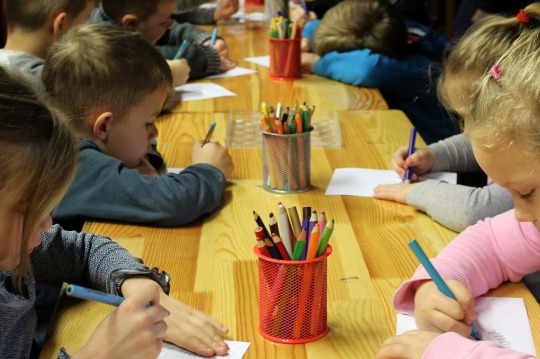
4. Personalized Learning
Individualized Assessments: Identify specific challenges each child faces with CVC words. For example, does the child struggle with blending sounds or recognizing vowel sounds?
One-on-One Support: Provide extra support for children who need additional practice. Break down words into their sounds (e.g., “c-a-t”) and blend them together.
Tips for Overcoming Common Challenges
Sometimes, children may face difficulties when learning CVC words. Here are some tips to address these challenges:
If blending sounds is hard: Use visual aids like blending boards or finger-pointing to connect each sound in a word.
If vowels are confusing: Focus on one short vowel sound at a time (e.g., short "a") and introduce related word families (e.g., bat, mat, sat).
If motivation is low: Incorporate their favorite activities or themes, such as animals or dinosaurs, into the lessons.
Real-Life Applications
By incorporating CVC words into daily life, children can see the practical value of reading:
Label everyday items around the house.
Create scavenger hunts where children search for objects whose names are CVC words.
Make reading a family activity by having older siblings or parents read with younger learners.
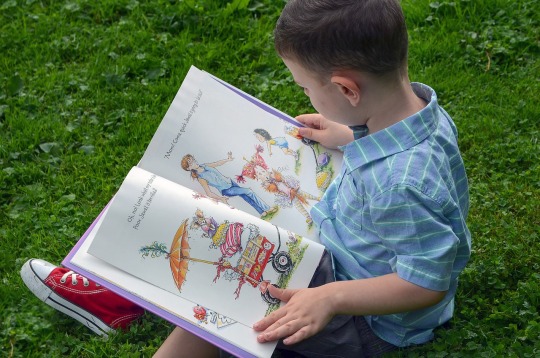
Summary
Teaching CVC words is a crucial step in unlocking a child’s reading potential and early literacy. By using engaging strategies like games, songs, and hands-on activities, parents and teachers can make learning fun and effective. Remember to focus on phonics, decoding, and building confidence through practice. With consistent effort, young learners will develop the skills they need to become fluent, confident readers.
You might be interested to read other articles included in the Reading Skills series:
Whole Word Recognition: A Reading Technique
The Phonics Approach to Teaching Reading
Further Readings and Resources: To deepen your understanding and find more ideas, explore these resources:
Teaching CVC Words: A Complete Guide
Blending CVC Words: Tips, Strategies, and Fun Activities for Early Readers CVC Words for Kindergarten (Free Printable List)
Reading and Writing CVC Words
Science of Reading Decoding Strategies with CVC Words
#CVCWords#PhonicsForKids#LearnToRead#EarlyLiteracy#TeachingTips#ReadingActivities#Homeschooling#homeeducation#homeschoolactivities#homeschoolingfun#interactivelearning#learnathome#preschooleducation#readingadventure#readingforkids#reading and writing resources for primary school#short stories#Youtube
0 notes